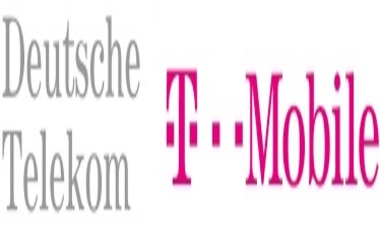
Deutsche Telekom Simplifies Blockchain Data Access
In the intricate world of blockchain technology, valuable data lies at the heart of utility for users, developers, and applications. However, accessing this data has traditionally been a laborious and technically demanding process, involving the meticulous examination of individual blocks. Deutsche Telekom MMS, a subsidiary of the telecommunications behemoth, has streamlined data processing through the operation of nodes in the capacity of Indexers.
Enhanced Capabilities with Ethereum and Arbitrum
Deutsche Telekom MMS has embarked on its indexing journey by catering to Ethereum and Arbitrum, a scaling solution for Ethereum characterized by reduced fees and heightened transaction throughput. Operating as an Indexer, Deutsche Telekom MMS plays a pivotal role in tracking sought-after information encompassing aspects such as pricing data, transaction records, and the historical trajectories of digital assets. This concerted effort significantly simplifies the task of retrieving indexed data, thereby empowering users, developers, and enterprises alike.
Native Cryptocurrency Rewards
In exchange for its invaluable contributions to data indexing, Deutsche Telekom MMS is compensated in the form of the native cryptocurrency of The Graph, known as “GRT.” This dynamic engagement extends across more than 40 blockchain networks, underscoring the extensive reach and impact of The Graph in the Web3 ecosystem.
Swift Access to Blockchain Data via Deutsche Telekom
Deutsche Telekom MMS has revolutionized the accessibility of blockchain data by presenting it in the form of a “subgraph” replete with open-source APIs. These Application Programming Interfaces (APIs) serve as publicly accessible programming interfaces within the realm of software development. They govern the access points for servers and enable seamless communication. Developers are empowered to create and publish their own APIs, utilizing the open-source query language known as “GraphQL.” This democratization of data access facilitates the utilization of otherwise hard-to-reach data sources.
Empowering Businesses with Subgraphs
The implications of this innovation extend beyond the realm of pure data accessibility. Businesses, for instance, can harness subgraphs to offer digital assets without the need for establishing their proprietary data storage solutions. Subgraphs enable the mapping of real-time price trends, cryptocurrency trading volumes, or the metrics associated with Non-Fungible Tokens (NFTs), facilitating informed decision-making and enhancing customer experiences.
Deutsche Telekom’s Commitment to Web3
Dirk Röder, the head of the Web3 Infrastructure & Solutions team at Deutsche Telekom MMS, expressed the company’s commitment to advancing blockchain technology and digital transformation. He emphasized, “With our infrastructure for The Graph, we are making the Web3 more secure. We help companies worldwide to access these Web3 services and drive decentralization with our Indexer.”
Web2 Transitioning into Web3
Tegan Kline, CEO and co-founder of Edge & Node, remarked on the significance of Deutsche Telekom MMS joining The Graph Network, characterizing it as a significant milestone in the transition from Web2 to Web3. She noted, “More and more established Web2 companies are embracing the Web3 space by participating in decentralized networks like The Graph. We are seeing the beginning of a snowball effect in support for permissionless technology. If we zoom out 10 years into the future, I predict that at least 50 percent of major tech companies will participate as Indexers on The Graph Network.”
Conclusion
In conclusion, Deutsche Telekom’s collaboration with The Graph is poised to be a transformative development in the Web3 landscape. By simplifying blockchain data access and fortifying the performance of The Graph, Deutsche Telekom MMS is championing the cause of decentralization and blockchain technology. This partnership serves as a testament to the growing support for permissionless technology, ushering in a new era where established tech companies embrace the potential of Web3 and decentralized networks like The Graph.
